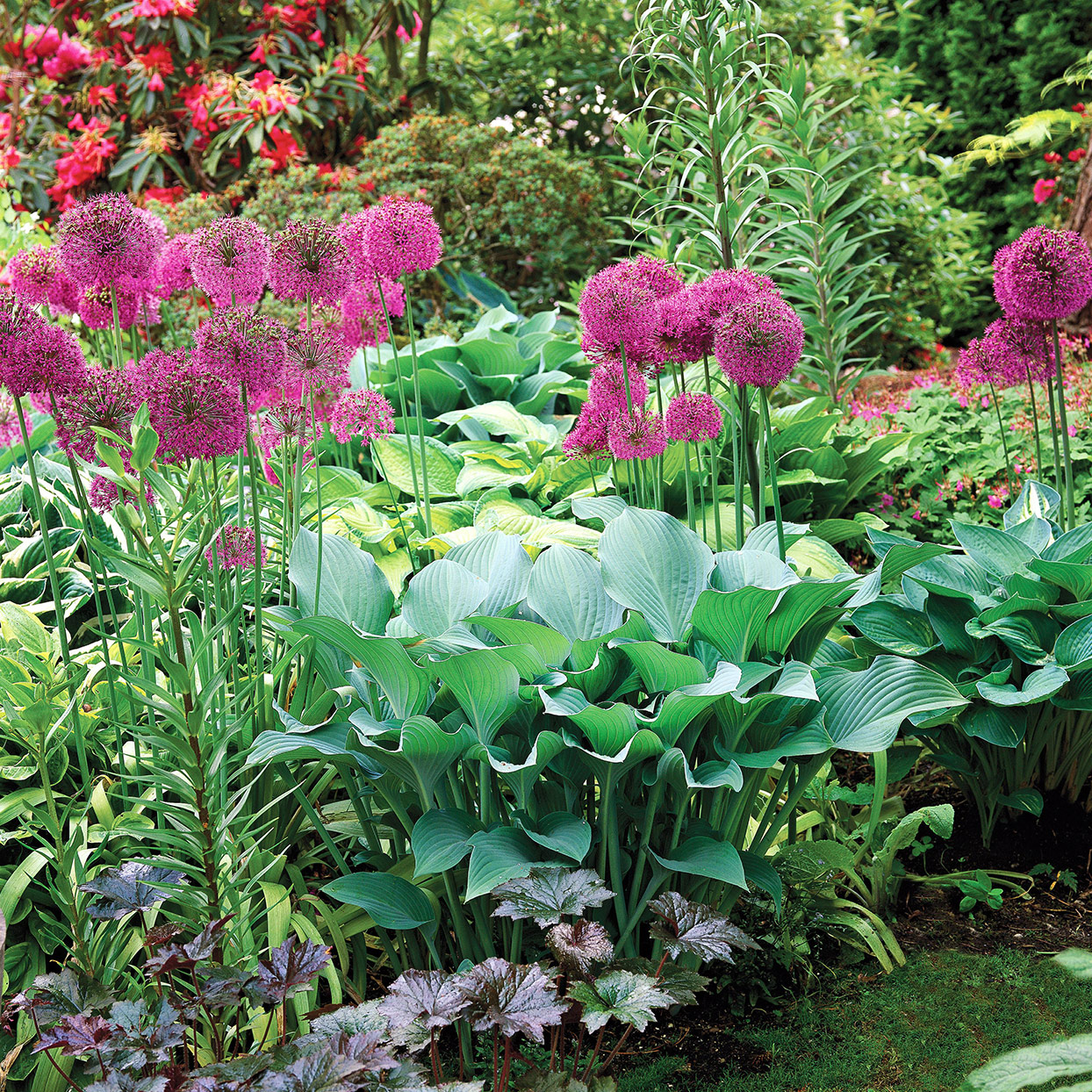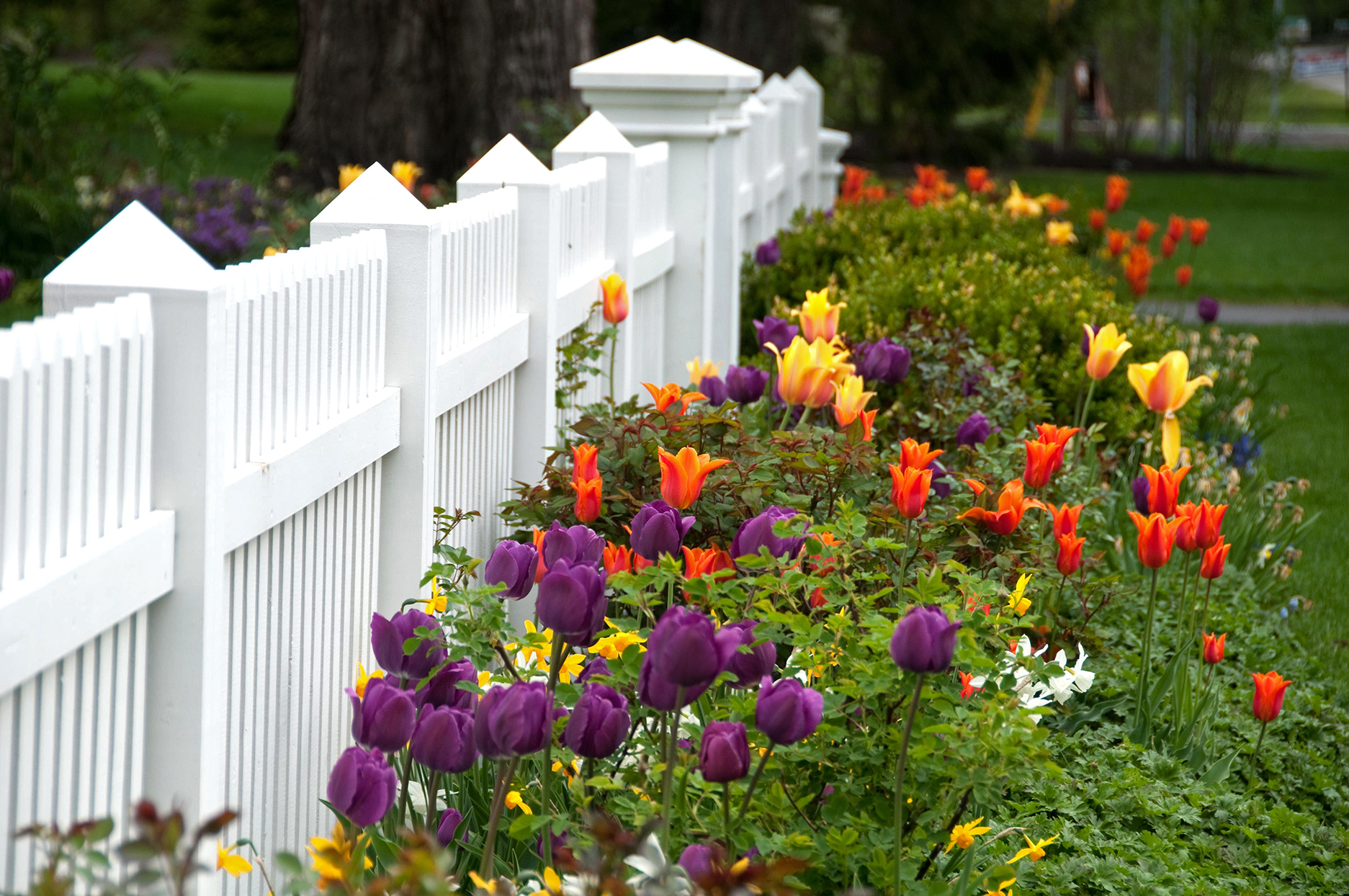Follow This Spring Gardening Checklist For a Gorgeous Landscape Year-Round
The garden is waking up, and you’re in charge! It’s time to start planting, pruning, and preparing your flower beds.
Much like a good spring cleaning after a long winter can help freshen up your house, taking a similar approach to your yard will help you get it back in shape for the warmer months. Even after the snow and ice melts, it can be a little overwhelming to tackle all the work that needs to be done for a picture-perfect spring landscape. Use this checklist to help pace yourself as you get your flower beds and shrubs cleaned up. It’s broken down into early, mid-, and late spring so you can plan out your garden clean-up tasks and hit each area of your landscape before summer arrives.
Early Spring
When you’re first getting back out into your garden, start with these tasks to build a solid foundation for your spring landscape.
1. Check for signs of growth
Did you remember to plant crocus last fall? They might already be poking their way out of the ground. And if you didn’t, you can cut forsythia or magnolia branches before their buds open and force them indoors for some early spring color.
2. Prep the beds
Remove winter mulch from around perennials or, if already well composted, work into the top layer of the soil. Clear away dead leaves or any other debris from winter storms from the soil surface so you’re ready to plant.
3. Prune
Now is the time to trim fruit trees if you didn’t prune in winter. Prune before buds begin to break into bloom or you’ll stress the tree and get a tiny crop (or possibly none). It’s also a good time to prune summer-blooming trees and shrubs, like potentilla and butterfly bush, just before they push out new growth.
4. Divide perennials
A good time to divide many perennials is just before their spring growth has begun. Dividing perennials is a budget-friendly way to fill your garden with more plants or share them with friends. It’s also good for keeping your existing perennials healthy; sometimes, if your plants grow in a large clump, the middle can thin out after a few years, leaving a bare spot. Dividing the clump will encourage fresh, new growth.
5. Perform basic maintenance of hardscaping
Check stonework for frost heaves, particularly in paths and edging. Check the general condition of your deck or patio and make any needed repairs. Clean off outdoor furniture so it’s ready when you are for relaxing after a busy day in the garden.
6. Plant veggies
Hardy, cool-season vegetables, like potatoes, artichokes, peas, and some lettuces, germinate best in cool soil, so plant them in early spring once the soil has thawed. They should be ready to harvest by early summer.

Mid-Spring
Halfway through the season, you should start seeing your spring landscape take shape as more and more bulbs, perennials, shrubs, and trees start growing again and even blooming. And with most of the clean-up done, you can get started on adding new plants to your garden.
1. Clean bird feeders
Some people like to take down their bird feeders in mid-spring and put them away until fall. If you want to leave them up year-round, now’s a good time to take them down, wash them out, and fill them up with fresh seed or nectar for spring.
2. Make notes as you watch the spring show
Some of your spring bulbs should be starting to flower! Enjoy the blooms, and take note of any empty spots where you want to plant bulbs later in the fall.
3. Plant hardy annuals
For some quick color, plant cool-season annuals like pansies or snapdragons around your yard. They also work well in containers to brighten up your front porch.
4. Add new trees and shrubs
Plant as soon as the ground isn’t frozen anymore. The earlier you can do this, the better, so your trees and shrubs have enough time to grow new roots before temperatures start getting hot.
5. Apply mulch
Once you’re finished planting, add a fresh layer of mulch around all your plants. If you mulch now before weeds have a chance to sprout, you’ll have next-to-no weeding come summer.

Late Spring
In late spring, you can start cleaning up flowers that have already bloomed. It’s also time to get planting in earnest to fill out your garden.
1. Deadhead bulbs
Remove spent blossoms from spring-flowering bulbs; this encourages the plants to store energy for next year rather than use it to make seeds. Be sure to let the foliage die back on its own without removing it until it is completely yellow or dried up.
2. Shop for summer annuals
Pick out flats of your favorite summer annuals like petunias, impatiens, and zinnias; remember to pick ones that aren’t in bloom yet for stronger plants.
3. Start warm-season veggies
While you’re harvesting the radishes and lettuces you sowed earlier in the spring, you can transplant seedlings of warm-season crops like tomatoes, peppers, and all sorts of herbs.
4. Plant summer-blooming bulbs
While spring-blooming bulbs should be planted in the fall, summer-blooming bulbs like dahlias and gladiolus should be planted once there’s no more threat of frost. Check your area’s average last frost date for a general idea of when to plant these bulbs, then get them in the ground after the last frost once the ground has warmed up.
With this spring landscaping checklist, you’ll have one of the best-looking gardens on the block. While there are still a few maintenance chores you should do every season, once you power through these tasks early on, you’ll have more time to kick back and enjoy your landscape over the summer.


